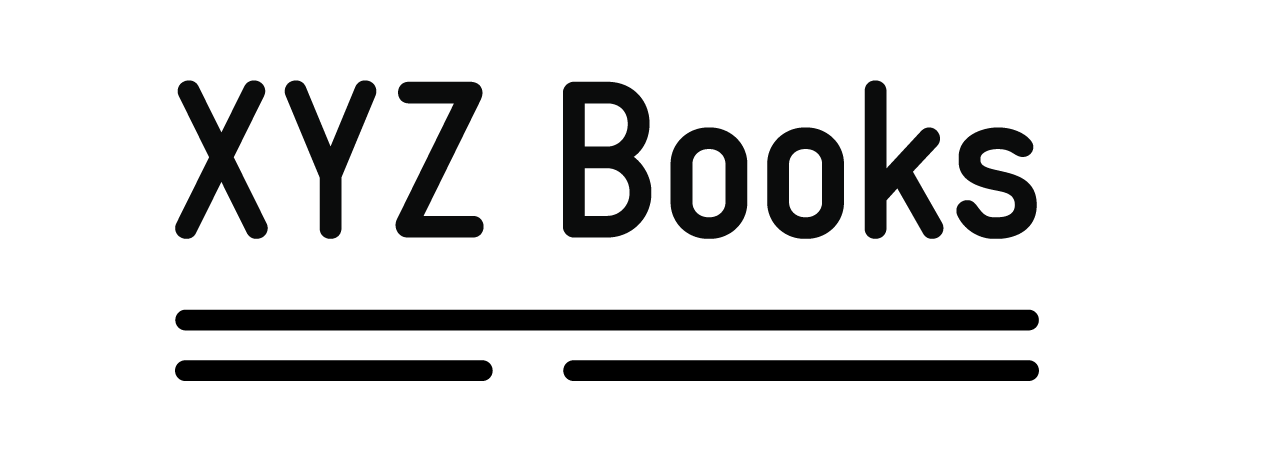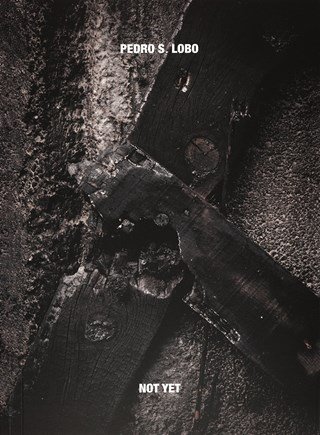 Image 1 of 6
Image 1 of 6

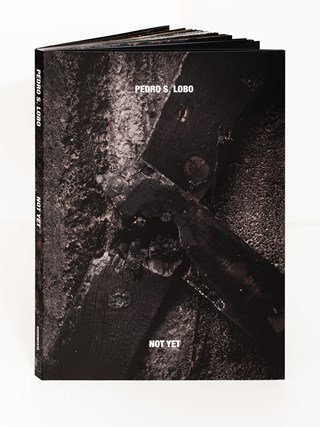 Image 2 of 6
Image 2 of 6

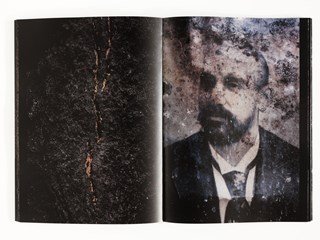 Image 3 of 6
Image 3 of 6

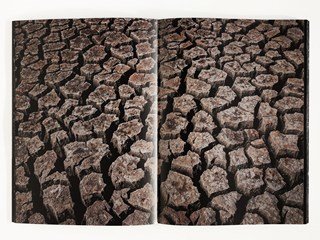 Image 4 of 6
Image 4 of 6

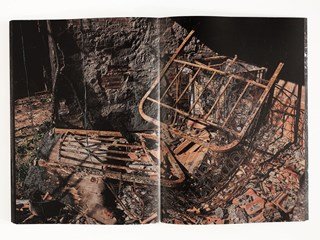 Image 5 of 6
Image 5 of 6

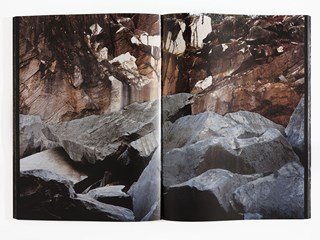 Image 6 of 6
Image 6 of 6







Not Yet / Pedro S. Lobo
It's the photobook of the year for me. And I don't know of another photobook with this gravity, not because it's the Covid-year, it's not about the covid-year and its fears, its dead - the epidemic isn't in it but the book is right that this year stretched forever, talking about other things, earlier, more present and broader.
An apocalyptic book? Or post-apocalyptic -- or not yet apocalyptic? But definitely not terminal, we have even more time, some time. "Not Yet" is the title, which is a warning of an end or, moreover, after all, perhaps, of the possibility of change.
We advance between ruins, through a route of natural or built (destroyed) ruins, which are not the fantasies of a perfidious cinematographer or the ghosts of a fictionalized delirium. They are encounters, the sought-after finds, of a photographer who travels, who wanders or roams, he says. There are marks of fires, there is ruined heritage (figures, tombs, bones), there are remains of an abandoned amusement park (we are told), there are quarries with and without the disaster, there are pieces of walls and floors invaded by disordered, invasive vegetation (devouring human marks, regenerating?). It is inevitable that we associate the seriousness of the journey through the pages with the oppressive weight of this threatening year, but Pedro Lobo's photographs do not illustrate the epidemic, his series already belonged to him, some of his lines of work are, among others, more conceptual ones ( with writing), more open to surprise and humor (the unusual), more graphic or constructed (meshes, structures), more documental (like the favelas of Rio, ephemeral architectures, with which I met him years ago in an unexpected exhibition: “ FAVELAS: ARCHITECTURE OF SURVIVAL”); like prisons in Brazil and Colombia: "IMPRISONED SPACES”, Blue Sky Books, Portland, USA., ephemeral dwellings - always paying attention to the inhabited heritage, even if it is unstable and undervalued).
The book "seems" like a movie, where we follow the worn marks of time, the itinerary of ruins, remains and vestiges, with a sequenced and rhythmic montage (also rhymed), instead of books with loose and helpless images that make no sense (they do not move forwards or backwards) or the meaning is private, closed. There is an interspacedl black band, vertical or horizontal, wide or double, which recalls the darkroom and sustains the very diverse continuity of the images. Even in ruins, things are light, they are color, standing out from the invading black background. No subtitles, locations or dates. They are images of today, yesterday and tomorrow. Pedro Lobo's new book is the book of the year, 2020 and 2021...
Alexandre Pomar, January 3, 2021
It's the photobook of the year for me. And I don't know of another photobook with this gravity, not because it's the Covid-year, it's not about the covid-year and its fears, its dead - the epidemic isn't in it but the book is right that this year stretched forever, talking about other things, earlier, more present and broader.
An apocalyptic book? Or post-apocalyptic -- or not yet apocalyptic? But definitely not terminal, we have even more time, some time. "Not Yet" is the title, which is a warning of an end or, moreover, after all, perhaps, of the possibility of change.
We advance between ruins, through a route of natural or built (destroyed) ruins, which are not the fantasies of a perfidious cinematographer or the ghosts of a fictionalized delirium. They are encounters, the sought-after finds, of a photographer who travels, who wanders or roams, he says. There are marks of fires, there is ruined heritage (figures, tombs, bones), there are remains of an abandoned amusement park (we are told), there are quarries with and without the disaster, there are pieces of walls and floors invaded by disordered, invasive vegetation (devouring human marks, regenerating?). It is inevitable that we associate the seriousness of the journey through the pages with the oppressive weight of this threatening year, but Pedro Lobo's photographs do not illustrate the epidemic, his series already belonged to him, some of his lines of work are, among others, more conceptual ones ( with writing), more open to surprise and humor (the unusual), more graphic or constructed (meshes, structures), more documental (like the favelas of Rio, ephemeral architectures, with which I met him years ago in an unexpected exhibition: “ FAVELAS: ARCHITECTURE OF SURVIVAL”); like prisons in Brazil and Colombia: "IMPRISONED SPACES”, Blue Sky Books, Portland, USA., ephemeral dwellings - always paying attention to the inhabited heritage, even if it is unstable and undervalued).
The book "seems" like a movie, where we follow the worn marks of time, the itinerary of ruins, remains and vestiges, with a sequenced and rhythmic montage (also rhymed), instead of books with loose and helpless images that make no sense (they do not move forwards or backwards) or the meaning is private, closed. There is an interspacedl black band, vertical or horizontal, wide or double, which recalls the darkroom and sustains the very diverse continuity of the images. Even in ruins, things are light, they are color, standing out from the invading black background. No subtitles, locations or dates. They are images of today, yesterday and tomorrow. Pedro Lobo's new book is the book of the year, 2020 and 2021...
Alexandre Pomar, January 3, 2021
Photographs: Pedro S. Lobo
Texts: Christian Carvalho Cruz
Concept and Editorial Coordination: Rosely Nakagawa Conceito e projeto gráfico
Concept and Graphic Design: Gabriel Zellmeister
English Translation: Ricardo Sternberg Copydesk & Ana Carolina Ramos
Proofreading: Anaelena Lima
Art work: Mario Ferraz Jr
Graphic Production: Maiadouro
2020
140 pages
21 x 29 cm
First edition
Portuguese and english texts
ISBN: 978-989-900-647-8
